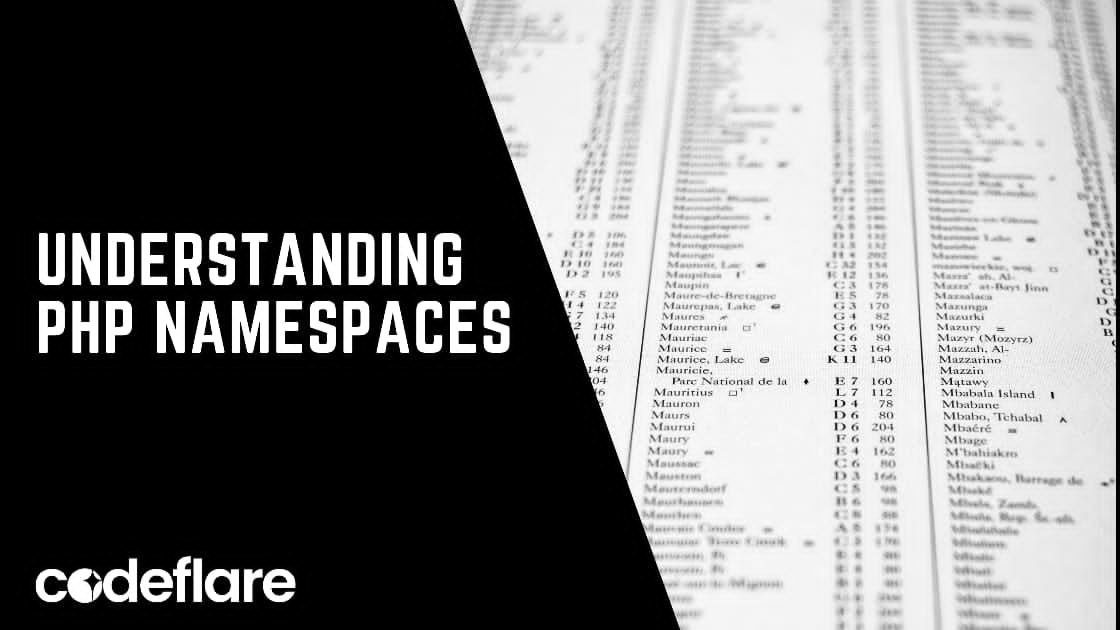
In PHP, namespaces are a way to encapsulate items such as classes, functions, and constants to avoid name conflicts in large applications or projects that use multiple libraries or third-party code. Namespaces were introduced in PHP 5.3 and have since become an essential feature in modern PHP development.
Why Use PHP Namespaces?
PHP developers often encounter situations where they may want to reuse code from different libraries, and sometimes these libraries can have functions or classes with the same names. Without namespaces, this leads to naming collisions. By grouping code under a namespace, you ensure that classes and functions can coexist without conflicts, even if they have the same name.
Benefits of PHP Namespaces:
- Prevents naming conflicts: Helps manage and avoid conflicts in names of classes, functions, and constants.
- Organizes code: Useful for structuring large codebases in a more logical way.
- Enables autoloading: Works seamlessly with PHP’s autoloading mechanism for easier inclusion of classes.
Defining a Namespace in PHP
Defining a namespace in PHP is simple. You use the namespace keyword at the top of the file before any code. Here’s a basic example:
<?php
namespace MyApp\Models;
class User {
public function __construct() {
echo "User model loaded!";
}
}
?>
In this example, the class User belongs to the MyApp\Models namespace. To use this class outside of the file, you would need to reference it with the fully qualified name.
Accessing Namespaced Classes
There are several ways to access a class, function, or constant from a namespace.
- Using the Fully Qualified Name:
You can refer to the fully qualified name to avoid any ambiguity. For instance:
<?php
require 'User.php';
$user = new \MyApp\Models\User();
?>
Here, the \MyApp\Models\User refers to the class with the full namespace.
- Using the
useKeyword:
To simplify, you can import a specific class using the use keyword:
<?php
use MyApp\Models\User;
$user = new User();
?>
By importing the class, you don’t have to repeatedly use the full namespace path.
Nested Namespaces
Namespaces can also be nested, making it easy to organize code hierarchically. Here’s an example:
<?php
namespace MyApp\Controllers\Admin;
class DashboardController {
public function index() {
echo "Admin dashboard";
}
}
?>
This allows for more specific grouping of code. The class DashboardController belongs to the MyApp\Controllers\Admin namespace.
Namespaces and Autoloading
Namespaces work efficiently with autoloaders in PHP, such as Composer’s autoloader. By organizing your classes with namespaces, autoloaders can automatically load the required files without manual require or include statements. This makes your codebase cleaner and easier to maintain.
Global Namespace
If you ever need to access a PHP core class, function, or constant within a namespaced file, you can use the global namespace by prefixing the core element with a backslash (\). For example:
<?php
namespace MyApp;
echo \strlen("Namespace Example");
?>
In this case, \strlen refers to the global strlen() function, preventing any conflicts with any custom strlen functions in your namespace.
Example of Namespaced Code:
Let’s consider two classes with the same name from different namespaces:
<?php
// file: MyApp/Models/User.php
namespace MyApp\Models;
class User {
public function getUser() {
return "User from Models";
}
}
// file: AnotherLibrary/User.php
namespace AnotherLibrary;
class User {
public function getUser() {
return "User from Another Library";
}
}
?>
Now, using these two classes together in the same script:
<?php
require 'MyApp/Models/User.php';
require 'AnotherLibrary/User.php';
use MyApp\Models\User as ModelsUser;
use AnotherLibrary\User as LibraryUser;
$modelUser = new ModelsUser();
echo $modelUser->getUser(); // Output: User from Models
$libraryUser = new LibraryUser();
echo $libraryUser->getUser(); // Output: User from Another Library
?>
In this example, the User class from two different namespaces (MyApp\Models and AnotherLibrary) is used without any conflict by aliasing the classes with as.
Conclusion
PHP namespaces are an essential feature in modern PHP development that allows you to avoid naming conflicts and organize your code better. By using namespaces, you can create modular, reusable code that works seamlessly with autoloaders like Composer. Understanding how to define, use, and access namespaces is crucial for building scalable applications in PHP.
Understanding PHP Standard Recommendations (PSR)






